Balkinization
an unanticipated consequence of
Jack M. Balkin
Balkinization Symposiums: A Continuing List
E-mail:
Jack Balkin:
jackbalkin at yahoo.com
Bruce Ackerman
bruce.ackerman at yale.edu
Ian Ayres
ian.ayres at yale.edu
Corey Brettschneider
corey_brettschneider at brown.edu
Mary Dudziak
mary.l.dudziak at emory.edu
Joey Fishkin
joey.fishkin at gmail.com
Heather Gerken heather.gerken at yale.edu
Abbe Gluck abbe.gluck at yale.edu
Mark Graber
mgraber at law.umaryland.edu
Stephen Griffin
sgriffin at tulane.edu
Jonathan Hafetz
jonathan.hafetz at shu.edu
Jeremy Kessler
jkessler at law.columbia.edu
Andrew Koppelman
akoppelman at law.northwestern.edu
Marty Lederman
msl46 at law.georgetown.edu
Sanford Levinson
slevinson at law.utexas.edu
David Luban
david.luban at gmail.com
Gerard Magliocca
gmaglioc at iupui.edu
Jason Mazzone
mazzonej at illinois.edu
Linda McClain
lmcclain at bu.edu
John Mikhail
mikhail at law.georgetown.edu
Frank Pasquale
pasquale.frank at gmail.com
Nate Persily
npersily at gmail.com
Michael Stokes Paulsen
michaelstokespaulsen at gmail.com
Deborah Pearlstein
dpearlst at yu.edu
Rick Pildes
rick.pildes at nyu.edu
David Pozen
dpozen at law.columbia.edu
Richard Primus
raprimus at umich.edu
K. Sabeel Rahmansabeel.rahman at brooklaw.edu
Alice Ristroph
alice.ristroph at shu.edu
Neil Siegel
siegel at law.duke.edu
David Super
david.super at law.georgetown.edu
Brian Tamanaha
btamanaha at wulaw.wustl.edu
Nelson Tebbe
nelson.tebbe at brooklaw.edu
Mark Tushnet
mtushnet at law.harvard.edu
Adam Winkler
winkler at ucla.edu
Compendium of posts on Hobby Lobby and related cases
The Anti-Torture Memos: Balkinization Posts on Torture, Interrogation, Detention, War Powers, and OLC
The Anti-Torture Memos (arranged by topic)
Recent Posts
False Marking in Patent and Copyright Law
Just A Few Blogs
ACS Blog
Alas, a Blog
Althouse
Arts and Letters Daily
Atrios (Eschaton)
Bill of Health
Buzzflash.com
Buzz Machine
Cato at Liberty
Juan Cole (Informed Comment)
Concurring Opinions
The Constitution in 2020
Corrente
Crooked Timber
Daily Howler
Daily Kos
Dana Boyd
Brad DeLong
Digby (Hullabaloo)
Discriminations
Daniel Drezner
Kevin Drum (Mother Jones)
Electrolite
En Banc
Eunomia (Daniel Larison)
Fafblog
Michael Froomkin (Discourse.net)
GovLab (Beth Noveck)
Rick Hasen (Election Law)
History News Network
How Appealing
Ignatz (Sam Heldman)
The Importance of (Ernie Miller)
Infolaw
Instapundit
International Economic Law and Policy Blog
IntLawGrrls
Jacob Levy
Jesus' General
Jurisdynamics
The Kitchen Cabinet
Mark Kleiman
Law Blog Central
Larry Lessig
Lawyers, Guns and Money
Liberal Oasis
Brian Leiter's Law School Reports
The Leiter Reports
Marginal Revolution
Megan McArdle
Memeorandum
Metafilter
Mirror of Justice
The New Republic
Newseum
No More Mister Nice Blog
Brendan Nyhan
Opinio Juris
Orcinus
The Originalism Blog
Pandagon
Passport (Foreign Policy)
Overcoming Bias
Political Animal (Washington Monthly)
Political Theory Daily Review
Political Wire (Taegan Goddard)
The Poor Man
Virginia Postrel
Prawfsblawg
Public Reason
Jonathan Rauch
Raw Story
Redstate
ReligiousLeftLaw.com
Reporters Committee For Freedom of the Press
Reproductive Rights Blog
Rothman's Roadmap to the Right of Publicity
SCOTUS Blog
Seeing the Forest
Clay Shirky
The Shifted Librarian
The Situationist
Larry Solum (Legal Theory)
Andrew Sullivan
Talking Points Memo
Talk Left
Tapped
Tbogg
TechPresident
The Paper Chase (Jurist)
Tom Paine
Tom Tomorrow (This Modern World)
Eve Tushnet
Uggabugga
University of Chicago Law School Faculty Blog
Unqualified Offerings
The Volokh Conspiracy
War and Piece (Laura Rozen)
Wampum
Oliver Willis
Wonkette
Written Description
Matthew Yglesias
Yin
Your Choice of Feeds
1. XML
powered by
2. Atom Feed
3. RSS 2.0
Thursday, August 26, 2010
False Marking in Patent and Copyright Law
Jason Mazzone
Section 292 of the Patent Act provides for a civil penalty for falsely marking a good as patented. It says: Whoever marks upon, or affixes to, or uses in advertising in connection with any unpatented article, the word “patent” or any word or number importing that the same is patented, for the purpose of deceiving the public ... shall be fined not more than $500 for every such offense.
Section 292 is a whistleblower provision. It allows anybody (without regard to personal injury) to bring a lawsuit and retain half of the collected penalty with the other half going to the United States.
A 2009 decision by the U.S. Court of Appeals for the Federal Circuit greatly increases the incentive to avoid section 292 liability. In Forest Group Inc. v. Bon Tool Co., the Federal Circuit held that each individual article that is falsely marked constitutes an “offense” within the meaning of section 292. Previously, lower courts had grouped multiple articles of the same product together as a single false-marking offense. This meant that the manufacturer of a falsely-marked product faced only a total possible fine of $500, regardless of how many individual articles were wrongly marked as patented. Following the decision in Forest Group, the manufacturer who falsely marks a product as patented can face fines in the millions of dollars, depending on the number of individual articles produced.
There is a lesson here for copyright law.
False claims of copyright are everywhere. As I documented in this article, copyright notices routinely appear on works that are in the public domain. For example, a pocket Constitution my students bring to class contains a copyright notice along with a warning against reproducing or transmitting the document without the publisher’s permission. Whatever the Constitution’s framers and ratifiers had in mind when they authorized Congress to enact copyright laws, they surely did not expect that one day somebody would claim a copyright in the Constitution itself.
The Copyright Act, in section 506(c), provides for a criminal penalty for fraudulently marking a work as copyrighted. However, the government almost never brings section 506(c) prosecutions. And in contrast to the Patent Act, the Copyright Act contains no civil false marking provision. With no downside to false marking, publishers have an incentive to label everything as copyrighted.
In reaching its result in Forest Group, the Federal Circuit reasoned that the language and history of section 292 supported a per-article interpretation of the patent mismarking fine, as did public policy reasons. The court explained: If an article that is within the public domain is falsely marked, potential competitors may be dissuaded from entering the same market. False marks may also deter scientific research when an inventor sees a mark and decides to forego continued research to avoid possible infringement. False marking can also cause unnecessary investment in design around or costs incurred to analyze the validity or enforceability of a patent whose number has been marked upon a product with which a competitor would like to compete. These injuries occur each time an article is falsely marked. The more articles that are falsely marked the greater the chance that competitors will see the falsely marked article and be deterred from competing.
Unsurprisingly, since Forest Group, there has been an increase in false marking lawsuits. There is now a small and growing industry of section 292 claims.
Like false patent notices, phony copyright notices impose costs on the public. False copyright notices deter legitimate uses of public domain works. They result also in unnecessary licensing fees.
The Copyright Act should be amended to include a false marking provision modeled on section 292 of the Patent Act.
A false marking provision in copyright law would incentivize publishers to provide accurate information about the status of a work. Public domain works marked as copyrighted would result in liability. A new edition of a public domain work that adds copyrighted material (an introduction, for example, or annotations) would be required to carry a notice specifying what is copyrighted and what is not.
As with the Patent Act, anybody would be able to bring a claim against the publisher who falsely marks a work as copyrighted. The person bringing the lawsuit would retain a portion of the remedy.
Section 292 of the Patent Act furthers the utilitarian purposes of our patent system. A copyright false marking law will likewise promote the public interests of copyright.
Posted
9:00 AM
by Jason Mazzone [link]
Comments:
Jason,
Do you suppose opponents of such a plan will argue undue burden on their profitability? Were there any such arguments against the existing patent false marking law?
Do you suppose opponents of such a plan will argue undue burden on their profitability? Were there any such arguments against the existing patent false marking law?
The patent false marking statute is absurd. Nobody relies on patent marking today to determine patent rights. They go to the patent office web site. And no competent business would avoid competing based on a marked patent number without also checking to see if the patent was in force and applicable to their own product. Yet the statue mandates that violators pay $500 per mis-marked article. Solo Cup never bothered to take expired patent numbers off of its paper cups, and is now being held up by a clever relator for damages in excess of $1 TRILLION DOLLARS.
Nobody benefits from this law except lawyers.
Nobody benefits from this law except lawyers.
Great link to the law firms hiding behind these so called Qui Tam (whistleblower) suits can be seen at http://www.law.com/jsp/cc/PubArticleCC.jsp?id=1202462844743 I have a small business web site client caught up in a false patent mis-marking suit filed on friday. Holdup Suspender Company holds multiple US patents for their unique suspender clips as shown at www.suspenders.com/patented.html Their original no-slip suspender clip patent was issued in 1990 (#4,901,408) has expired. They were granted and new improved design patent granted in March 2010 (D619,495 S), but have clips marked with the expired patent # on USA made suspenders in stock, on customers and at retailer stores.
Darn shame they face potential closure as the very active (10 cases) Qui Tam and attorney pliantiffs in Ohio want $500 bucks per mis-marked suspender clip, their domain, and replacement of all suspenders marked with the expired patent number. They have 6 temp people filing off patent numbers this Labor Day weekend as the new replacement clip stock, with new patent #, is in limited supply. NIce move by the Obama small biz friendly administration and Eric Holder Attorney General to actually participate in suing these family run tax paying entrepenuers hopefully ranking in their life savings and forcing closure of their businesses.
Amazing... from Brooks Bros. Bow Ties to Holdup Suspenders the wannabee King with no clothes jumps ugly on every USA manufacturer who are inventive enough to have patented products. **Incidently every judge in every courtroom are using court reporting equipment and computer harddrives mis-marked with expired patent numbers so they should recuse themselves ... or get some common sense.
Post a Comment
Darn shame they face potential closure as the very active (10 cases) Qui Tam and attorney pliantiffs in Ohio want $500 bucks per mis-marked suspender clip, their domain, and replacement of all suspenders marked with the expired patent number. They have 6 temp people filing off patent numbers this Labor Day weekend as the new replacement clip stock, with new patent #, is in limited supply. NIce move by the Obama small biz friendly administration and Eric Holder Attorney General to actually participate in suing these family run tax paying entrepenuers hopefully ranking in their life savings and forcing closure of their businesses.
Amazing... from Brooks Bros. Bow Ties to Holdup Suspenders the wannabee King with no clothes jumps ugly on every USA manufacturer who are inventive enough to have patented products. **Incidently every judge in every courtroom are using court reporting equipment and computer harddrives mis-marked with expired patent numbers so they should recuse themselves ... or get some common sense.
Books by Balkinization Bloggers

Gerard N. Magliocca, The Actual Art of Governing: Justice Robert H. Jackson's Concurring Opinion in the Steel Seizure Case (Oxford University Press, 2025)

Linda C. McClain and Aziza Ahmed, The Routledge Companion to Gender and COVID-19 (Routledge, 2024)

David Pozen, The Constitution of the War on Drugs (Oxford University Press, 2024)

Jack M. Balkin, Memory and Authority: The Uses of History in Constitutional Interpretation (Yale University Press, 2024)
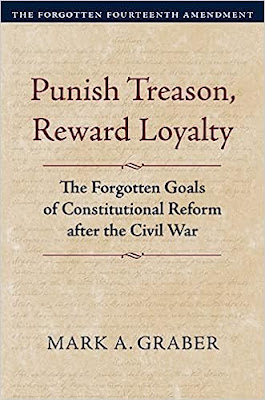
Mark A. Graber, Punish Treason, Reward Loyalty: The Forgotten Goals of Constitutional Reform after the Civil War (University of Kansas Press, 2023)
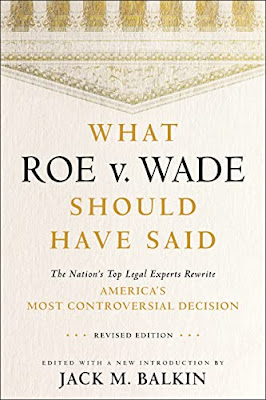
Jack M. Balkin, What Roe v. Wade Should Have Said: The Nation's Top Legal Experts Rewrite America's Most Controversial Decision - Revised Edition (NYU Press, 2023)

Andrew Koppelman, Burning Down the House: How Libertarian Philosophy Was Corrupted by Delusion and Greed (St. Martin’s Press, 2022)

Gerard N. Magliocca, Washington's Heir: The Life of Justice Bushrod Washington (Oxford University Press, 2022)
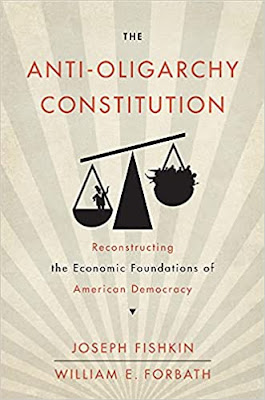
Joseph Fishkin and William E. Forbath, The Anti-Oligarchy Constitution: Reconstructing the Economic Foundations of American Democracy (Harvard University Press, 2022)

Mark Tushnet and Bojan Bugaric, Power to the People: Constitutionalism in the Age of Populism (Oxford University Press 2021).

Mark Philip Bradley and Mary L. Dudziak, eds., Making the Forever War: Marilyn B. Young on the Culture and Politics of American Militarism Culture and Politics in the Cold War and Beyond (University of Massachusetts Press, 2021).

Jack M. Balkin, What Obergefell v. Hodges Should Have Said: The Nation's Top Legal Experts Rewrite America's Same-Sex Marriage Decision (Yale University Press, 2020)

Frank Pasquale, New Laws of Robotics: Defending Human Expertise in the Age of AI (Belknap Press, 2020)

Jack M. Balkin, The Cycles of Constitutional Time (Oxford University Press, 2020)

Mark Tushnet, Taking Back the Constitution: Activist Judges and the Next Age of American Law (Yale University Press 2020).

Andrew Koppelman, Gay Rights vs. Religious Liberty?: The Unnecessary Conflict (Oxford University Press, 2020)

Ezekiel J Emanuel and Abbe R. Gluck, The Trillion Dollar Revolution: How the Affordable Care Act Transformed Politics, Law, and Health Care in America (PublicAffairs, 2020)

Linda C. McClain, Who's the Bigot?: Learning from Conflicts over Marriage and Civil Rights Law (Oxford University Press, 2020)
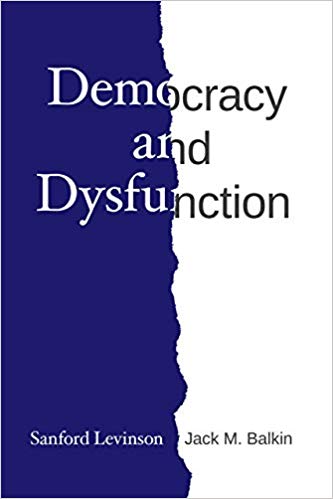
Sanford Levinson and Jack M. Balkin, Democracy and Dysfunction (University of Chicago Press, 2019)

Sanford Levinson, Written in Stone: Public Monuments in Changing Societies (Duke University Press 2018)

Mark A. Graber, Sanford Levinson, and Mark Tushnet, eds., Constitutional Democracy in Crisis? (Oxford University Press 2018)

Gerard Magliocca, The Heart of the Constitution: How the Bill of Rights became the Bill of Rights (Oxford University Press, 2018)

Cynthia Levinson and Sanford Levinson, Fault Lines in the Constitution: The Framers, Their Fights, and the Flaws that Affect Us Today (Peachtree Publishers, 2017)

Brian Z. Tamanaha, A Realistic Theory of Law (Cambridge University Press 2017)

Sanford Levinson, Nullification and Secession in Modern Constitutional Thought (University Press of Kansas 2016)

Sanford Levinson, An Argument Open to All: Reading The Federalist in the 21st Century (Yale University Press 2015)

Stephen M. Griffin, Broken Trust: Dysfunctional Government and Constitutional Reform (University Press of Kansas, 2015)

Frank Pasquale, The Black Box Society: The Secret Algorithms That Control Money and Information (Harvard University Press, 2015)

Bruce Ackerman, We the People, Volume 3: The Civil Rights Revolution (Harvard University Press, 2014)
Balkinization Symposium on We the People, Volume 3: The Civil Rights Revolution

Joseph Fishkin, Bottlenecks: A New Theory of Equal Opportunity (Oxford University Press, 2014)

Mark A. Graber, A New Introduction to American Constitutionalism (Oxford University Press, 2013)

John Mikhail, Elements of Moral Cognition: Rawls' Linguistic Analogy and the Cognitive Science of Moral and Legal Judgment (Cambridge University Press, 2013)

Gerard N. Magliocca, American Founding Son: John Bingham and the Invention of the Fourteenth Amendment (New York University Press, 2013)

Stephen M. Griffin, Long Wars and the Constitution (Harvard University Press, 2013)

Andrew Koppelman, The Tough Luck Constitution and the Assault on Health Care Reform (Oxford University Press, 2013)

James E. Fleming and Linda C. McClain, Ordered Liberty: Rights, Responsibilities, and Virtues (Harvard University Press, 2013)
Balkinization Symposium on Ordered Liberty: Rights, Responsibilities, and Virtues

Andrew Koppelman, Defending American Religious Neutrality (Harvard University Press, 2013)

Brian Z. Tamanaha, Failing Law Schools (University of Chicago Press, 2012)

Sanford Levinson, Framed: America's 51 Constitutions and the Crisis of Governance (Oxford University Press, 2012)

Linda C. McClain and Joanna L. Grossman, Gender Equality: Dimensions of Women's Equal Citizenship (Cambridge University Press, 2012)

Mary Dudziak, War Time: An Idea, Its History, Its Consequences (Oxford University Press, 2012)

Jack M. Balkin, Living Originalism (Harvard University Press, 2011)

Jason Mazzone, Copyfraud and Other Abuses of Intellectual Property Law (Stanford University Press, 2011)

Richard W. Garnett and Andrew Koppelman, First Amendment Stories, (Foundation Press 2011)

Jack M. Balkin, Constitutional Redemption: Political Faith in an Unjust World (Harvard University Press, 2011)

Gerard Magliocca, The Tragedy of William Jennings Bryan: Constitutional Law and the Politics of Backlash (Yale University Press, 2011)

Bernard Harcourt, The Illusion of Free Markets: Punishment and the Myth of Natural Order (Harvard University Press, 2010)

Bruce Ackerman, The Decline and Fall of the American Republic (Harvard University Press, 2010)
Balkinization Symposium on The Decline and Fall of the American Republic

Ian Ayres. Carrots and Sticks: Unlock the Power of Incentives to Get Things Done (Bantam Books, 2010)

Mark Tushnet, Why the Constitution Matters (Yale University Press 2010)
Ian Ayres and Barry Nalebuff: Lifecycle Investing: A New, Safe, and Audacious Way to Improve the Performance of Your Retirement Portfolio (Basic Books, 2010)
.jpg)
Jack M. Balkin, The Laws of Change: I Ching and the Philosophy of Life (2d Edition, Sybil Creek Press 2009)

Brian Z. Tamanaha, Beyond the Formalist-Realist Divide: The Role of Politics in Judging (Princeton University Press 2009)
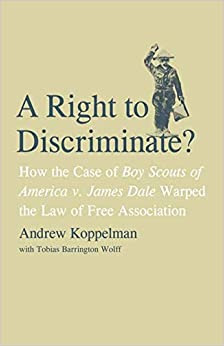
Andrew Koppelman and Tobias Barrington Wolff, A Right to Discriminate?: How the Case of Boy Scouts of America v. James Dale Warped the Law of Free Association (Yale University Press 2009)

Jack M. Balkin and Reva B. Siegel, The Constitution in 2020 (Oxford University Press 2009)
Heather K. Gerken, The Democracy Index: Why Our Election System Is Failing and How to Fix It (Princeton University Press 2009)

Mary Dudziak, Exporting American Dreams: Thurgood Marshall's African Journey (Oxford University Press 2008)

David Luban, Legal Ethics and Human Dignity (Cambridge Univ. Press 2007)

Ian Ayres, Super Crunchers: Why Thinking-By-Numbers is the New Way to be Smart (Bantam 2007)

Jack M. Balkin, James Grimmelmann, Eddan Katz, Nimrod Kozlovski, Shlomit Wagman and Tal Zarsky, eds., Cybercrime: Digital Cops in a Networked Environment (N.Y.U. Press 2007)
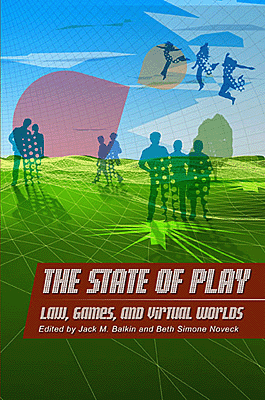
Jack M. Balkin and Beth Simone Noveck, The State of Play: Law, Games, and Virtual Worlds (N.Y.U. Press 2006)

Andrew Koppelman, Same Sex, Different States: When Same-Sex Marriages Cross State Lines (Yale University Press 2006)
Brian Tamanaha, Law as a Means to an End (Cambridge University Press 2006)
Sanford Levinson, Our Undemocratic Constitution (Oxford University Press 2006)
Mark Graber, Dred Scott and the Problem of Constitutional Evil (Cambridge University Press 2006)
Jack M. Balkin, ed., What Roe v. Wade Should Have Said (N.Y.U. Press 2005)
Sanford Levinson, ed., Torture: A Collection (Oxford University Press 2004)
Balkin.com homepage
Bibliography
Conlaw.net
Cultural Software
Writings
Opeds
The Information Society Project
BrownvBoard.com
Useful Links
Syllabi and Exams
